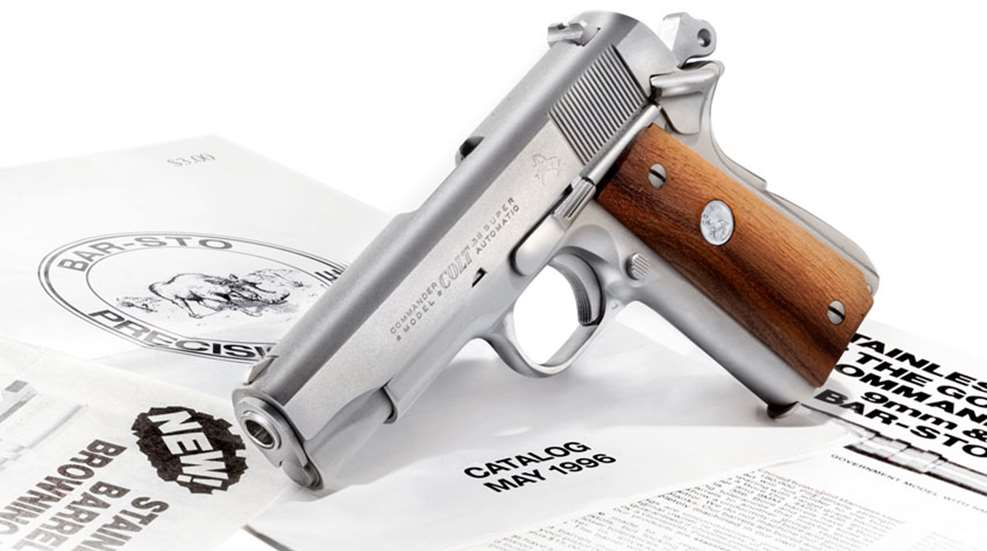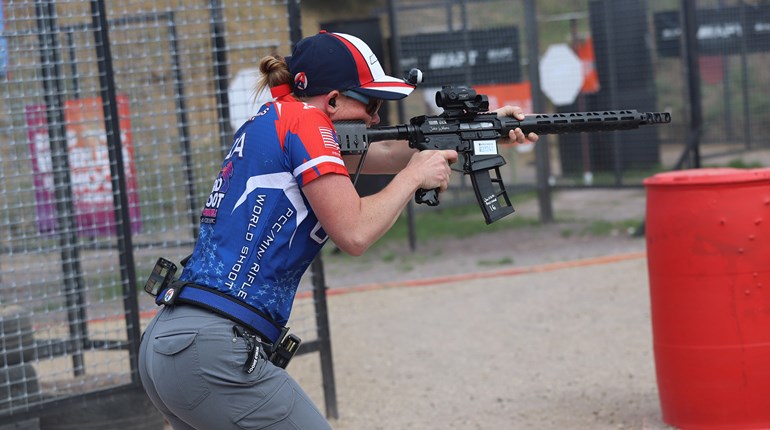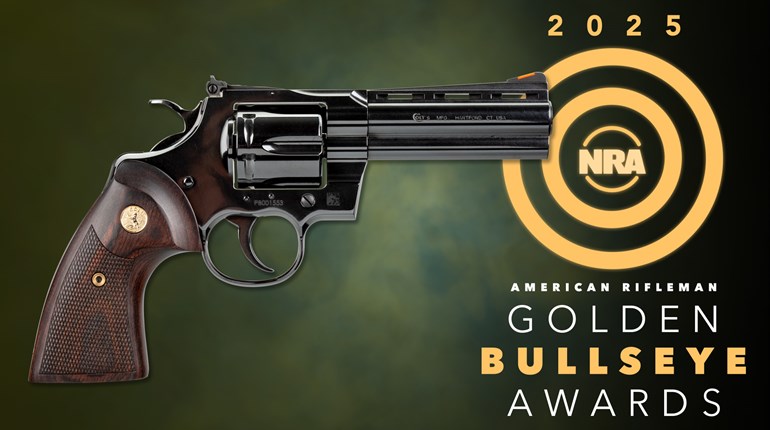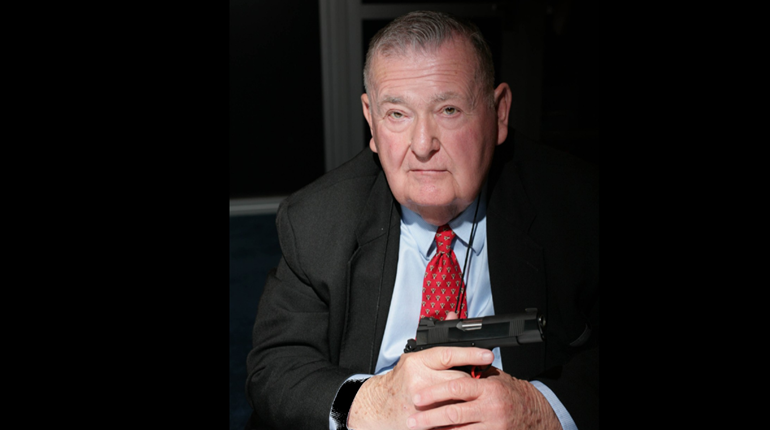
By the mid-’70s, I had settled into a career in law enforcement and was working as a deputy sheriff in Southern California. I brought my life-long interest in firearms—particularly the ones you can shoot with one hand—into the new line of work. This did not seem to trouble my employer, who was willing to let me shoot the PPC course on his range up to a dozen times a week and even contributed the ammo to do it. This was a time of much learning on my part. I read voraciously, haunted gun stores and just generally exercised a growing interest in all things handgun. This was a time when some legendary gunwriters were hard at their work. Guys like George Nonte, Jan Stevenson, Skeeter Skelton, Dean Grennell, Elmer Keith and Charlie Askins held forth at great length every month. This was the period before Jeff Cooper opened Gunsite or Bill Jordan took off his Smokey the Bear hat. Suffice it to say, the ’70s were years in which I got really serious about learning the handgun in all its forms. That was 40 years ago, and I’m still on track, knowing full well that the more I learn, the more there is to learn.
Sometime in this period, I realized how often the gunwriters whose careers stretched back a decade or two mentioned a particular Colt. The gun was the famous Government Model pistol, chambered for the .38 Super cartridge. I personally had never fired one, but was nonetheless intrigued by the aura of mystery surrounding the gun and the performance of its cartridge. The 1911 pistol in .38 Super was developed in the 1920s when the republic was plagued by the escapades of what the press solemnly referred to as “motorized bandits.” Law enforcement had not kept pace with technology, so a relative few gangs of bank robbers were able to flee their crime scenes in fast cars. Steel used in those early cars was of quite high quality, so much so that John Law’s righteous gunfire had little effect in stopping them. The answer was a high-speed, medium-caliber FMJ bullet, delivered from a reliable semi-automatic pistol. They really did little more than dust off the old .38 ACP cartridge and load it hot enough to produce about 200 fps more velocity. The 1911, suitably altered to function with the smaller-diameter cartridge, was the delivery platform. Mechanically, everything worked out very well.
With no small fanfare, the .38 Super appeared in 1929. Touted as an ideal police-service handgun, the sleek new Colt met with varied success. Several midwestern departments bought significant numbers of the gun. Apparently it was successful enough to remain in the Colt catalog. The company still make runs of them from time to time. But even when I started getting interested in the ’70s, there was this deferred reverence about the gun. I couldn’t resist it and when the opportunity presented itself, I bought one. It was a brand-new Commander version. Seldom have I been so disappointed. Everything about that .38 Super was fine until you tried to shoot a decent group. The pistol would not stay on a dinner plate at 25 yards, and that just isn’t good enough. Eventually, I got an opportunity to try a couple of other examples and they didn’t do any better. I put the .38 Super aside for another time and went on to other shooting projects. A few years later, I began a full-time career as a gunwriter. And I met an exceptional icon of the industry: Irving O. Stone—the “Sto” of Bar-Sto barrels. (The “Bar” was wife and partner, Barbara.)
Southern California was the epicenter of the developing sport of combat pistol shooting in those days. Irving Stone (no one ever called him anything but “Stoney”) was a former U.S. Navy hard-hat diver, aerospace industry machinist as well as quite the avid pistol shooter. As an active competitor, he listened to his fellow shooters wishing for better accuracy in their 1911 .45s. He founded a company that has produced thousands of pistol barrels for different kinds of popular handguns. In the company’s earlier days, Bar-Sto ran little 1-inch magazine ads for the ever-popular 1911 .45s. Stoney’s passed, but his son is now at the helm, making great products and winning awards. I was pleased to call Stoney a friend and miss him to this day. In one particular conversation, I mentioned my unhappiness over factory accuracy in the .38 Super. Almost instantly, he broke into laughter, as though I had apparently brought up a problem that he had long since solved.
Working with several other local shooters, Stoney had already attacked the .38 Super accuracy enigma. In the original 1929 guns, the maker had used the same procedure for headspacing as the original turn-of-the-century .38 ACP cartridge. The case has a very small rim—the ledge that extends out from the base of the cartridge. When chambered, the original Supers stopped when the rim contacted a small arc of ledge in the chamber. It made for a very sloppy fit. Stoney just discarded the factory barrel, replacing it with his own design. This one was contoured to headspace the .38 Super cartridge when the front edge of the case came in contact with the end of the chamber—just like the .45 ACP and so many other pistol cartridges. When my pistol came back from Bar-Sto, I was eager to see what it was capable of. As luck would have it, this happened the same week that Colt had sent me a “new” .38 Super barrel for my troublesome Commander. I now had three barrels—old factory, new factory and Bar-Sto.
At the range, I clamped the gun in the Ransom Rest and anxiously went to work with a box of Federal’s Gold Medal ball. The original barrel shot a dismal group of almost 10 inches, but the new Colt factory barrel brought that down to about 2 ½ inches. Surprisingly, the Bar-Sto barrel put 10 rounds in an impressive 1 ¾ inches at 25 yards. Apparently, Colt had apparently done some more research and development work, because the company’s new chamber (which it still uses with new Supers) was suspiciously like Stoney’s.
Forgive the reminiscing, but those were some quite exciting times for folks in the firearm industry—we were all building our knowledge of and skills with all manners of fightin’ iron.





































